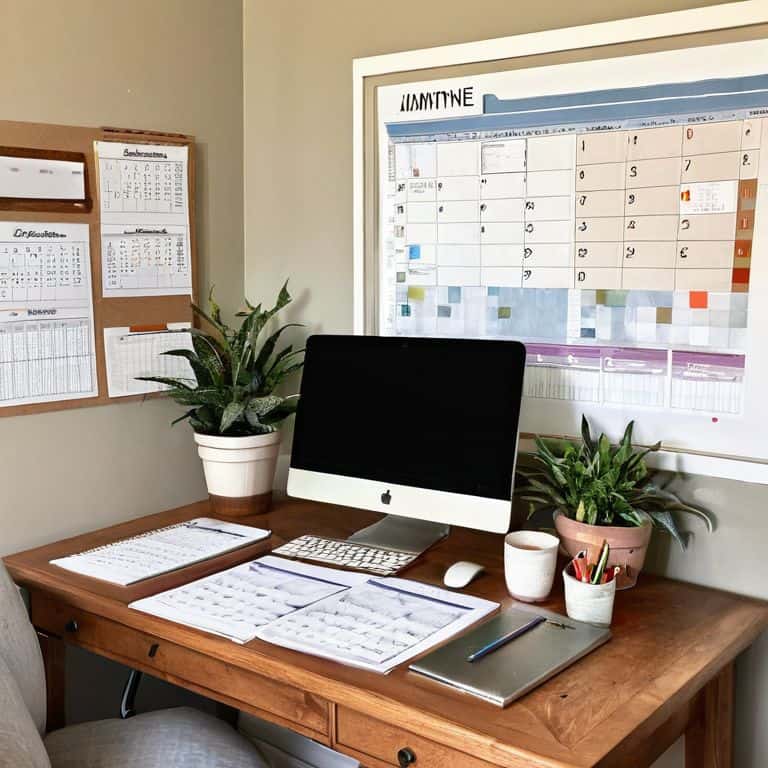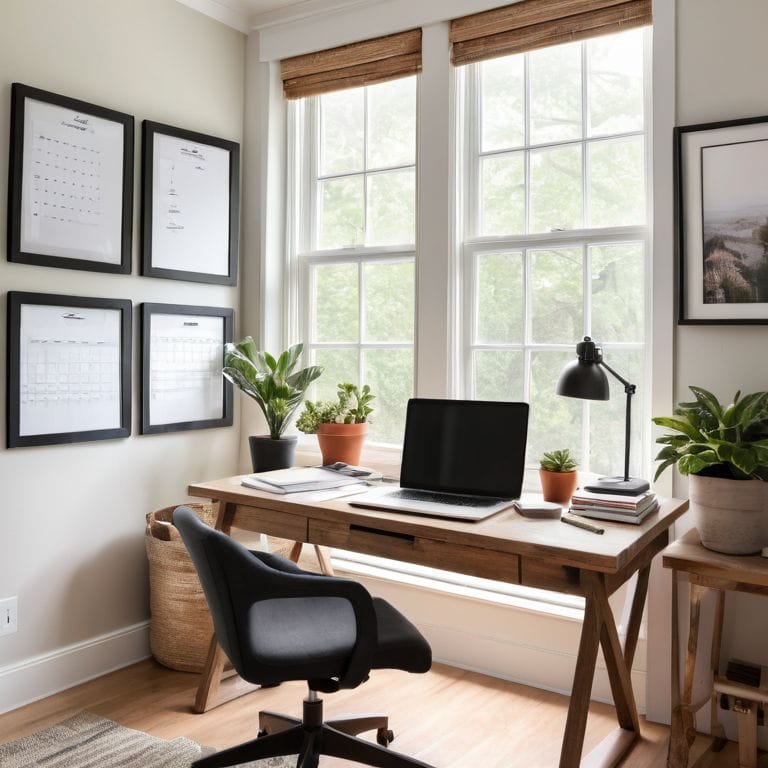I still remember the feeling of frustration when my wife and I were trying to save for a down payment on a house. We felt like we were doing everything right, but somehow, the goal seemed to be moving further away. That’s when I realized that the traditional advice on how to save for a down payment on a house was not only overwhelming but also misguided. The common myth that you need to make drastic sacrifices to reach your goal is simply not true. In reality, it’s about making small, consistent changes to your financial habits and creating a clear plan that works for you.
In this article, I’ll share with you the practical steps to save for a down payment on a house without feeling deprived or stressed. You’ll learn how to automate your savings, create a realistic budget, and make the most of your income. My goal is to provide you with honest, no-hype advice that will help you achieve your dream of owning a home. By the end of this guide, you’ll have a clear understanding of how to save for a down payment on a house and be well on your way to making your dream a reality.
Table of Contents
- Guide Overview: What You'll Need
- Step-by-Step Instructions
- Mindful Down Payment Savings
- Paving the Path to Homeownership: 5 Essential Tips
- Key Takeaways for Saving Your Dream Down Payment
- A Simple yet Powerful Truth
- Reaching the Summit: A Reflection on Your Down Payment Journey
- Frequently Asked Questions
Guide Overview: What You'll Need

Total Time: several months to several years
Estimated Cost: $0 – $20,000 or more
Difficulty Level: Intermediate / Hard
Tools Required
- Budgeting software (optional)
- Spreadsheet (for tracking expenses)
- Calculator (for calculating savings goals)
Supplies & Materials
- Savings account (high-yield savings account recommended)
- Envelope or folder (for organizing financial documents)
- Pen and paper (for recording financial goals and progress)
Step-by-Step Instructions
- 1. First, let’s set a realistic goal for your down payment. This means figuring out how much you need to save and when you want to achieve it. For most people, this is a percentage of the home’s purchase price, typically 20% to avoid private mortgage insurance (PMI). Take some time to research the current real estate market in your desired area to get an idea of the prices and calculate your target down payment amount.
- 2. Next, assess your current financial situation by gathering all your financial documents, including payslips, bank statements, and any debt you might have. This step is about understanding your cash flow, where your money is coming from and where it’s going. Make a list of your income sources and your monthly expenses to see how much you can realistically allocate towards your down payment fund each month.
- 3. Now, create a budget that works for you. This isn’t about cutting back on everything you enjoy but rather making conscious decisions about how you spend your money. Consider adopting a minimalist approach to reduce unnecessary expenses. For me, living a minimalist lifestyle and enjoying activities like long-distance hiking have taught me the value of prioritizing what truly adds value to my life. Allocate a specific amount each month towards your down payment fund, and make sure it’s an amount you can stick to.
- 4. Automating your savings is a crucial step. Set it and forget it by setting up an automatic transfer from your checking account to your savings or dedicated down payment account. This way, you ensure that you save a fixed amount regularly without having to think about it. I recommend setting this up to happen just after you receive your paycheck, so you’re saving before you spend.
- 5. Consider utilizing tax-advantaged accounts for your down payment savings. Depending on your location, there might be specific accounts or programs designed to help first-time homebuyers save for a down payment. These accounts can offer tax benefits that will help your savings grow faster. It’s worth doing some research or consulting with a financial advisor to see what options are available to you.
- 6. If you have high-interest debt, such as credit card balances, it’s a good idea to focus on paying those off before aggressively saving for a down payment. High-interest debt can significantly hinder your ability to save, as a large portion of your money will go towards interest payments rather than the principal amount. Consider consolidating your debt into a lower-interest loan or balance transfer credit card, and make a plan to pay it off as quickly as possible.
- 7. Lastly, review and adjust your plan regularly. Your financial situation and goals can change over time, so it’s essential to periodically review your budget and down payment savings plan. Life can be unpredictable, and unexpected expenses can arise, so having a buffer and being flexible with your plan is crucial. Celebrate your milestones along the way, and don’t hesitate to seek advice if you’re unsure about any aspect of your financial journey.
Mindful Down Payment Savings

As I reflect on my own experiences with saving for big goals, like funding my long-distance hikes, I’ve come to realize the importance of mindful spending. It’s about being present and aware of where your money is going, and making conscious decisions about what’s truly important to you. When it comes to saving for a down payment, this mindset is crucial. By prioritizing your spending and avoiding unnecessary expenses, you can free up more money in your budget to put towards your goal.
For first time home buyers, it can be overwhelming to navigate the various options available for saving. That’s why I always recommend exploring high yield savings accounts specifically designed for down payments. These accounts can offer higher interest rates than traditional savings accounts, helping your money grow over time. Additionally, some down payment assistance programs may be available, depending on your location and financial situation.
To stay on track, it’s essential to set realistic targets and celebrate your progress along the way. Saving for a down payment on a tight budget requires discipline and patience, but it’s achievable with the right mindset and strategy. By automating your savings and avoiding common down payment savings challenges, you can make steady progress towards your goal and ultimately achieve the financial peace of mind that comes with owning your own home.
First Time Home Buyer Savings Tips
As a first-time home buyer, it’s essential to be intentional with your savings. I recommend setting up a separate, dedicated savings account specifically for your down payment. This will help you avoid commingling funds and reduce the temptation to dip into your savings for non-essential purchases. Consider automating your savings by setting up a monthly transfer from your primary account. This way, you’ll ensure consistent progress towards your goal without having to think about it.
By prioritizing your down payment savings, you’ll be taking a significant step towards achieving your dream of homeownership. Remember, every little bit counts, and making mindful financial decisions will ultimately lead to a more fulfilling and stress-free journey to your new home.
High Yield Savings for Dreams
As I reflect on my own experiences saving for long-distance hikes, I realize the importance of having a dedicated account for my goals. That’s why I recommend using a high-yield savings account specifically for your down payment fund. This separate account will help you avoid commingling your savings with your everyday spending money, reducing the temptation to dip into it for non-essential purchases. By earning a higher interest rate, you’ll also be able to grow your savings over time, bringing your dream of homeownership closer to reality.
I’ve seen many of my clients benefit from this approach, and it’s a key part of my mindful money coaching philosophy. By automating your savings and using a high-yield account, you’ll be able to make steady progress towards your goal without feeling overwhelmed or stressed. Remember, saving for a down payment is a journey, and having the right tools and mindset can make all the difference.
Paving the Path to Homeownership: 5 Essential Tips
- Start by assessing your current financial situation, understanding your income, expenses, and debts to determine how much you can realistically save each month
- Automate your savings by setting up a separate, dedicated account for your down payment fund and scheduling regular transfers from your primary account
- Explore and utilize tax-advantaged options such as first-time homebuyer programs, or other savings vehicles that can help your money grow faster
- Consider adopting a minimalist lifestyle to reduce unnecessary expenses and allocate that money towards your down payment savings, remembering that every small sacrifice brings you closer to your goal
- Regularly review and adjust your budget to ensure you’re on track to meet your down payment savings goal, celebrating small victories along the way to stay motivated and focused
Key Takeaways for Saving Your Dream Down Payment
Start by automating your savings to create a consistent flow of funds towards your down payment goal, reducing daily money stress and making progress feel more manageable
Adopt a mindful approach to saving by prioritizing your spending on what truly matters, and consider using high-yield savings accounts to optimize your growth without taking on excessive risk
Remember, saving for a down payment is a journey, and it’s essential to focus on building healthy habits and a long-term perspective, rather than getting caught up in anxiety or feelings of overwhelm about reaching your goal
A Simple yet Powerful Truth
Saving for a down payment isn’t just about accumulating wealth, it’s about cultivating the patience and discipline to turn your dreams into a reality, one mindful step at a time.
Leo Carter
Reaching the Summit: A Reflection on Your Down Payment Journey

As we conclude this journey to saving for a down payment on a house, let’s take a moment to reflect on the key milestones we’ve covered. We started with a simple, step-by-step guide to get you started, and then dove into the importance of mindful down payment savings. We explored tips for first-time home buyers, and discussed the benefits of using high-yield savings accounts to make your money work harder for you. By automating your savings and making a few smart financial decisions, you can make steady progress towards your goal.
Now, as you move forward on your path to homeownership, remember that saving for a down payment is not just about accumulating wealth – it’s about creating a sense of freedom and peace of mind. Just like a long-distance hike, the journey may be challenging at times, but the scenery along the way and the view from the top make it all worthwhile. Stay focused, stay committed, and you’ll be holding the keys to your dream home before you know it.
Frequently Asked Questions
What are the most effective ways to automate my savings for a down payment?
To automate your savings, I recommend setting up a separate, high-yield savings account specifically for your down payment fund. Then, arrange for automatic transfers from your primary checking account, either bi-weekly or monthly, to make steady progress toward your goal without having to think about it.
How do I determine a realistic down payment goal based on my income and expenses?
To determine a realistic down payment goal, I recommend starting with a simple exercise: track your income and expenses for a month. Then, use the 28/36 rule as a guideline – 28% of your gross income for housing costs and 36% for total debt payments. From there, we can work backwards to find a down payment amount that feels achievable and aligned with your values.
Are there any specific high-yield savings accounts or programs that offer benefits for first-time home buyers?
I recommend exploring accounts like the Alliant Credit Union’s Savings Account or the Citibank Home Buyer Savings Program, which offer competitive yields and perks specifically for first-time home buyers. These accounts can help your down payment fund grow faster, and some even offer matching contributions or low-fee mortgages.
